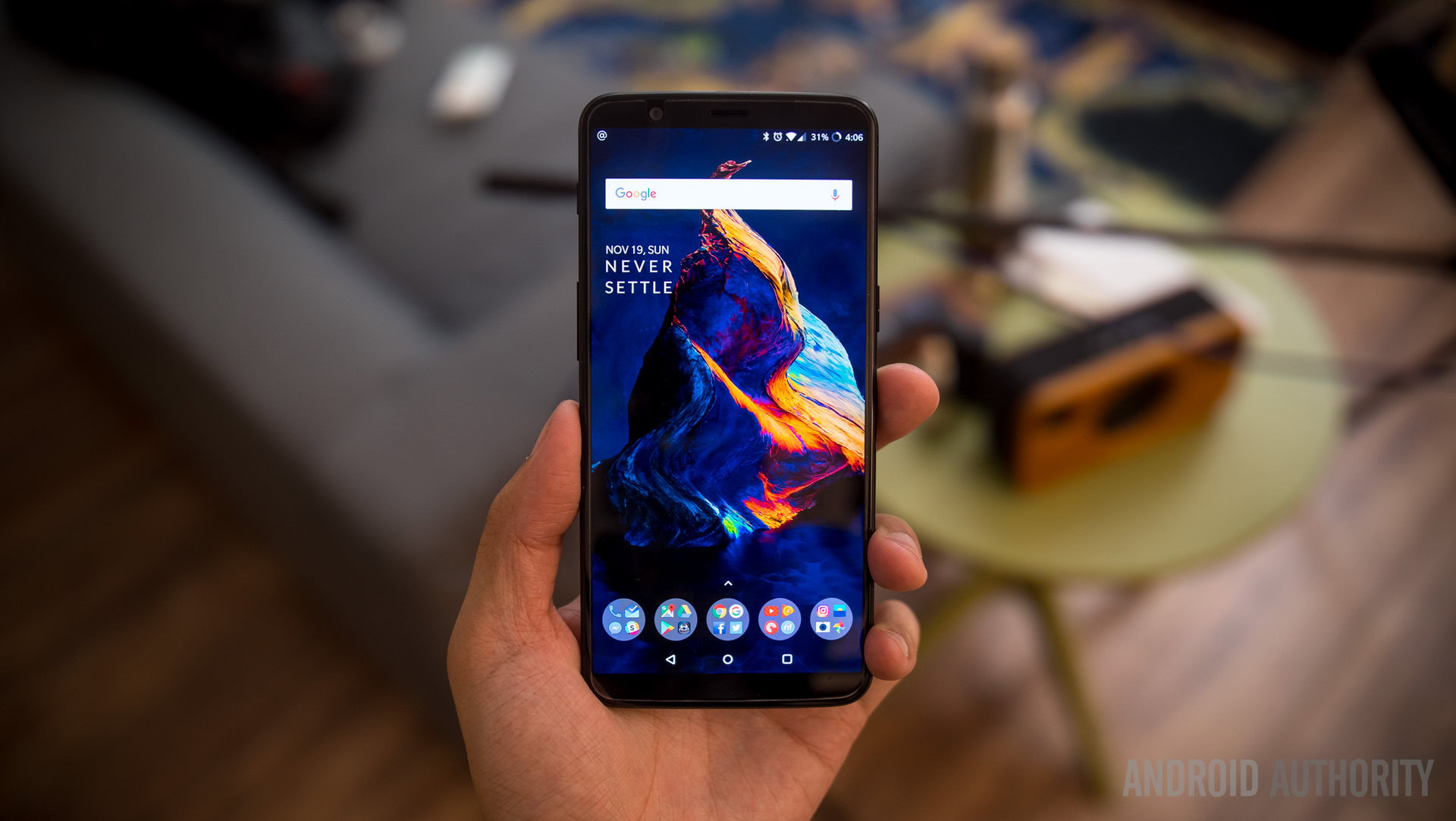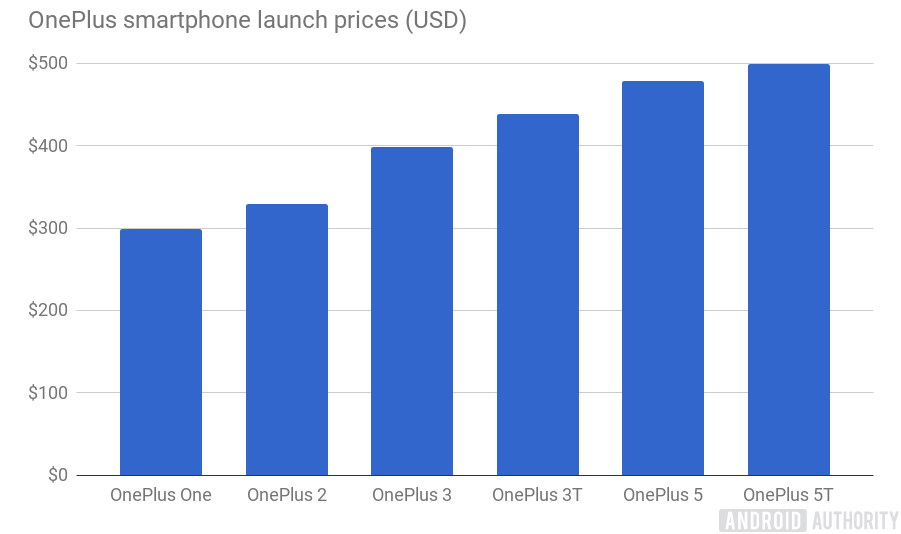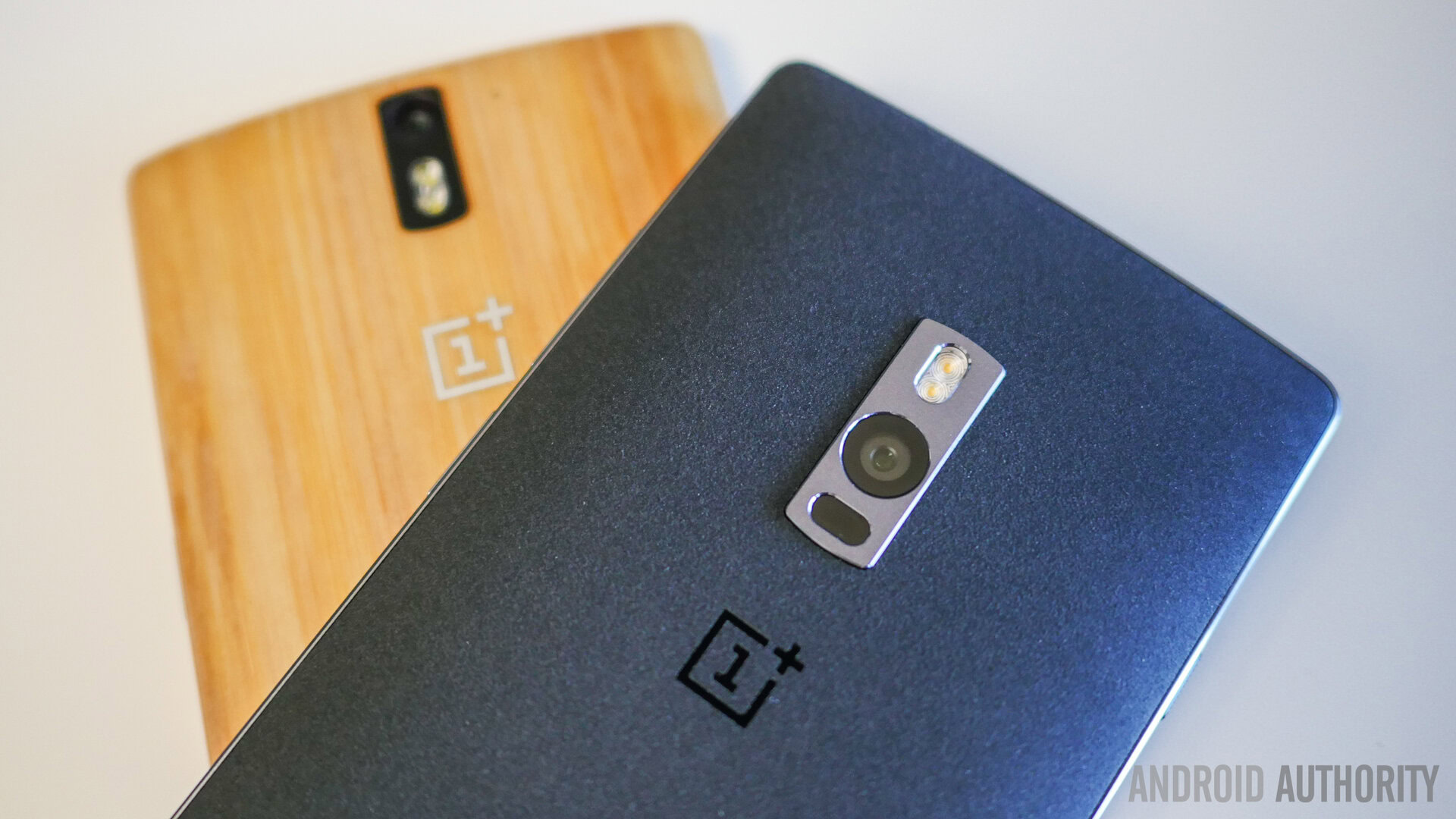Affiliate links on Android Authority may earn us a commission. Learn more.
Why is the OnePlus 5T priced at $500?

The OnePlus 5T is finally here. Not only does it pack the familiar high-end hardware that fans have come to expect, it also brings a number of tweaks and improvements over the already well received OnePlus 5.
However, the new release hasn’t passed without some complaints from the series’ fans. The $499 price tag is the highest ever for a OnePlus handset, and considerably more than the company’s $299 debut. OnePlus built a name for itself by promising to never compromise on hardware despite its low price point. But can we really believe in the “Never Settle” mantra now that customers are expected to pay half a grand for its phones?
The fact of the matter is that OnePlus’ prices have been steadily nudging upwards with each release. The original OnePlus One debuted for just $299, creeping up to $329 with the OnePlus 2, and further still with each passing generation. This year’s $499 price point is a very noticeable 67-percent increase over the first model. Another $100 and it will have doubled in price. On average, prices have been creeping up by 11 percent with each release, and about 22 percent each year.

To be fair to OnePlus, accelerating prices aren’t a new phenomenon in the smartphone market. A number of manufacturers have increased prices each generation. That’s especially evident this year, as some models pass the $1,000 mark. However, the average rise hasn’t been nearly as steep. Typical launch price increases for the cheapest Samsung Galaxy S models are only up 19 percent over the same period. Apple’s basic iPhone 8 is only eight percent more expensive than the 5S. The iPhone X represents a 54 percent jump in prices, but even that’s a lower rate than OnePlus.
Granted, these companies have always been charging premium prices with little headroom to maneuver further upwards until recently. Perhaps OnePlus is simply catching up.
OnePlus prices have been increasing at a faster rate than both Apple and Samsung, when comparing cheapest flagship entry points. So why the price hike?
It’s possible that the rising cost of keeping up with high-end components may have left OnePlus with little choice but to push up its prices. The problem with that argument is that OnePlus has chosen to implement a number of non-essential and clearly more expensive technological choices in its latest models. 8 or even 6 GB of RAM is far more than necessary, the dual camera setup in the OnePlus 5 and 18:9 thin-bezel display in the new 5T couldn’t have been cheap, despite the screen’s 1080p, rather than QHD, resolution. The look of more recent models are also clearly designed to attract the premium crowd.
While these features are nice to have and certainly add to the premium profile of the brand, they add costs to the final price tag. That runs counter to the company’s original mission: to provide a quality phone which doesn’t compromise on performance or cost. If you want all the bells and whistles, there were and still are expensive flagships catering to that market.
Today’s OnePlus handsets seem much more like cut-down flagships trying to catch a ride on the coat tails of Samsung and Apple, rather than pushing what’s possible on a budget to the absolute limit. The early OnePlus phones never pretended to be the highest flyers, instead little extras like customizable cases and unique software partnerships offered extra value at little actual cost. That’s a subtle but important distinction to make, and it marks a shift in the company’s business model since the OnePlus 3.
Rather than pushing limits on a budget, OnePlus has moved on to more closely imitate flagship tier hardware, and that's led to higher prices.

The market landscape has changed since 2014. The mid-tier is more competitive than ever, partly due to the continued rise of other Chinese OEMs. This leave only thin profit margins up for grabs at these lower price points. Companies need to ship a lot of phones for development investments to be worthwhile. OnePlus is still a small smartphone brand with limited global reach, so searching for profits in the more premium tier is perhaps the best option for the company.
This isn’t necessarily a bad thing for consumers, either. With top-tier flagships pushing prices ever higher, there’s a growing gap for feature-rich phones to fill in the $500 to $800 tier. Phones like the LG G6, Moto Z2 Play, and others offer great value for customers looking to pick up top-tier specs minus one or two cutting-edge features, and the OnePlus 5T seems right at home here.
Either way, the “Never Settle” slogan doesn’t mean quite the same thing as it did three and a half years ago. What do you think about OnePlus’ change in strategy? Are you prepared to pay the higher premiums or should the company have stuck to its original low-cost model?